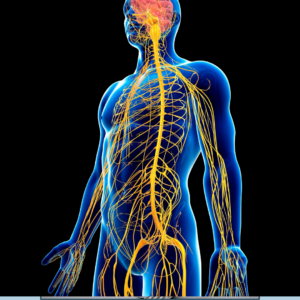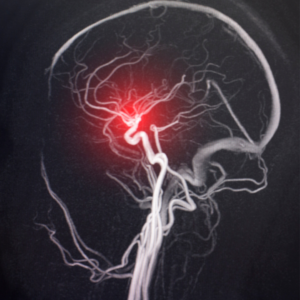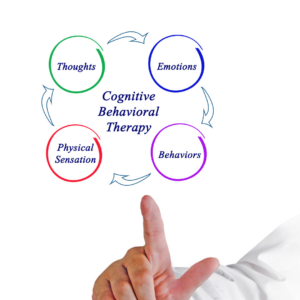In your wellness journey, you may have encountered the bewildering phenomenon of referred pain, which manifests in areas distant from its source. It’s a complex puzzle, isn’t it? Yet, for those with chronic conditions, recovering from trauma, or navigating injuries, understanding this concept is a pivotal move towards empowerment and regaining control over your well-being.
The Pathways of Pain
It might surprise you to learn that some referred pain travels along specific nerve pathways. This means you may feel discomfort originating in one organ or place of the body entirely in another area. It’s a curious phenomenon in which the nervous system sends mixed signals about the location of the soreness, making it difficult for our brain to pinpoint the distress. Our bodies have a delicate network of nerves threaded throughout. Sometimes, the signals get crossed. Because of its deceptive nature, referred pain can be challenging to diagnose and treat, but understanding its principles is the first step toward managing it more effectively.

Patterns and Recognition
Not all referred pain is random; there are identifiable patterns. For instance, arm discomfort may signal heart complications. At the same time, aching in your shoulder blade might indicate issues with internal organs like the gallbladder or liver. In contrast, a throbbing knee may indicate low back issues, while headaches might originate in the cervical spine. As explained in “PMC,” these patterns act as guides, giving clues to uncover the main issue rather than providing a conclusive diagnosis. Therefore, it is advisable to seek advice from healthcare experts skilled at diagnosing and treating musculoskeletal expressions of pain.
Fascia: The Hidden Culprit
Beyond nerve pathways lies a lesser-known player in the pain game called the fascia. This web-like connective tissue envelops our muscles and organs. When strained, the aching can be mysterious, seemingly untraceable, and often mistaken for other ailments.
Understanding the role of fascia in pain perception highlights the need for a comprehensive approach to treatment that looks at the whole picture rather than isolated symptoms.

The Role of the Brain
Many people are surprised to learn that referred pain is not a result of the body’s physical structures but a product of the brain. Various factors, like our previous experiences, emotional state, and even cultural beliefs, influence this “pain map” within our brain.
Additionally, pain is not so much a sensation as a sophisticated perception forged in your mind. Consider this enlightening truth: physical suffering is often fully driven by the brain, making it a deeply subjective experience influenced by physical factors, memories, emotions, and even sensory triggers such as smells.
Influences That Shape How We Perceive Pain
Here lies the most profound revelation in our exploration of pain perception—we are not passive recipients of this sensation. Our past experiences, the stories we’ve heard, and the environment around us all shape how intensely we feel pain.
Remember a time when a familiar aroma alleviated some discomfort without any medication? That’s not magic; your neural network responds to positive associations. Similarly, stress can amplify our suffering, while tranquillity might diminish it. Thus, managing our environment and emotions is a major ally in our search for relief.

Cognitive Behavioral Therapy: Empowering Pain Management
Cognitive behavioural therapy (CBT) is an evidence-based psychological intervention that promotes self-awareness, emotional balance, and adaptive coping strategies. Researchers have widely documented the effectiveness of CBT for pain management. Studies consistently show its effectiveness in reducing symptoms and improving the overall quality of life for individuals suffering from chronic pain. Working with a psychotherapist or other counsellor may help patients understand and cope with their pain.
Articulating the Pain Experience
Your experiences are valid! The trick is translating them accurately to a healthcare professional so they can actually help you. Clear communication is crucial. When describing your condition, be as specific as possible. Describe the location, type of pain (sharp, dull, throbbing), frequency, intensity, and any activities that worsen or lessen it. This detailed portrait of your soreness assists professionals in piecing together a more accurate diagnosis. While filling out all those intake forms and repeatedly telling your story is tedious, they are essential to your patient history. The more information you can provide, the quicker your practitioner can solve the mystery of your pain.

Tailoring Treatments for Maximum Effectiveness
A one-size-fits-all approach to managing pain falls short of addressing each individual’s unique needs. Efficient management often requires a multidisciplinary team that includes practitioners with specialized training, physical therapy, acupuncture, visceral manipulation, nutrition, and psychotherapy to design personalized treatment plans. This holistic strategy ensures the improvement of symptoms. It aims to tackle the root cause of the discomfort, paving the way for sustainable recovery and wellness.
The Way Forward
In light of these insights, we extend you a beacon of hope: Manage your lifestyle. Seek professional guidance attuned to your physical symptoms and you as a complex and unique individual.
Keep this your mantra: patience and persistence are your trusted companions on this healing voyage. And remember, when it comes to conquering referred pain, understanding is half the battle won.
Stay empowered, well-informed, and positive as you break through the barriers of chronic pain and rediscover the joys of a vibrant, balanced life.
Your pain is real, but so is hope. With this affirmative note, we encourage you to act. After all, your wellness story is incomplete, and the next chapter is in your hands.

Conclusion
At Newleaf Total Wellness Centre, we understand the complexity of referred pain and its impact on our patients. We strive to help people heal from injuries, trauma, and illness to achieve optimal wellness through a holistic approach that prioritizes education, collaboration, and individualized treatment plans. With our team of dedicated professionals and a range of specialized services, we are committed to helping our patients find long-term relief and improve their overall quality of life. Don’t let referred pain hold you back – let Newleaf Total Wellness Centre help you on your journey towards a pain-free life. Book an appointment to discuss your unique needs.
Written by DeVera Nybo, MBA, Owner, Newleaf Total Wellness Centre
Disclaimer
This document is for informational purposes and is not a substitute for professional medical advice, diagnosis, or treatment. Always seek the advice of your physician or another qualified healthcare provider with any questions you may have regarding a medical condition, including pain.
References:
International Association for the Study of Pain (IASP). (n.d.). Referred Pain. Retrieved from https://www.iasp-pain.org/terminology?navItemNumber=576#Referredpain
PMC. (2015). Understanding the referred pain experience, Journal of Physical Therapy Science, 27(2), 555-556. doi:10.1589/jpts.27.555
Cognitive Behavioural Therapy for Chronic Pain. (2021). Retrieved from https://www.nhs.uk/conditions/cognitive-behavioural-therapy-cbt/treatment-for-pain/
National Center for Complementary and Integrative Health. (2019). Acupuncture: In Depth. Retrieved from https://www.nccih.nih.gov/health/acupuncture-in-depth
Visceral Manipulation Institute. (n.d.). What is Visceral Manipulation? Retrieved from https://www.barralinstitute.com/therapies/index.php
Heartland Health Research Institute. (2019). Manual Osteopathy: Holistic Approach for Pain Relief and More. Retrieved from http://heartlandhealthresearchinstitute.com/manual-osteopathy-holistic-approach-for-pain-relief-and-more/

